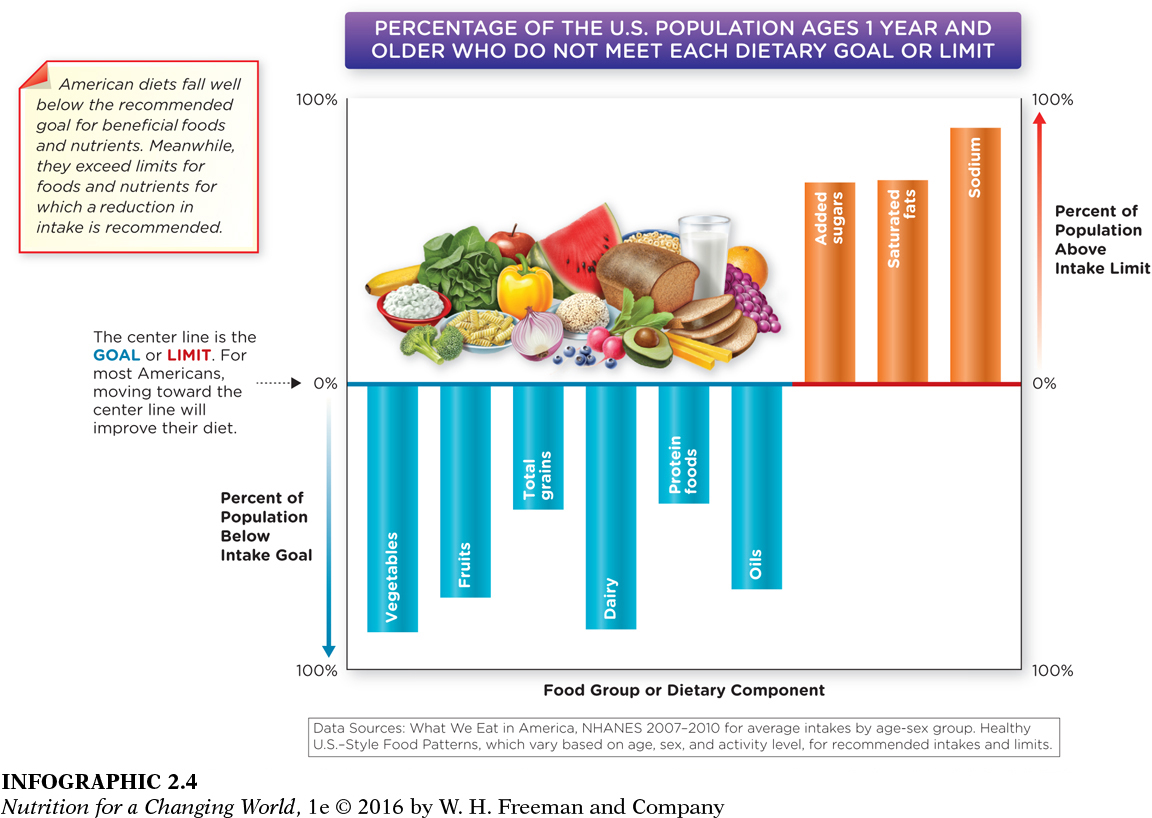LIMIT THESE: SOLID FATS AND ADDED SUGARS
SOLID FATS contain high amounts of saturated fats, which make them solid at room temperature. Reducing dietary solid fats is an important way to reduce saturated fat intake and excess calories.
Regardless of where you live, making food choices requires some planning and thought. Today, eating is all about options—every major grocery store is filled with innumerable types of bread, breakfast cereal, tomato sauce, and any other item imaginable. Most people can identify nutrient-dense foods like vegetables, fruits and whole grains. Realistically, though, there are many reasons why people don’t always opt for nutrient-dense foods. When you’re hungry, it’s often easier and cheaper to grab whatever is handy, like a cheeseburger or a candy bar. Plus, after a stressful day, the salty or sweet taste can feel like a reward. Such foods get most of their calories from saturated fats and added sugars. Added sugars are found in sugar-sweetened drinks like sodas, energy drinks, and sports drinks, and desserts. Average Americans typically get approximately one-third of their calories from solid fats and added sugars. (INFOGRAPHIC 2.4)
Solid fats include butter, beef fat, chicken fat, pork fat, stick margarine, and shortening. The fat in milk is also considered to be solid fat. Solid fats are foods, such as butter, but also food ingredients, such as shortening in cookies or cakes, or the hydrogenated oils used to fry foods. A good way to reduce solid fat intake is to eat lean meats, and significantly reduce the intake of cheese, pizza, desserts, and pastries.
29
Solid fats are high in saturated fats, which are strongly linked to an increased risk of heart disease, but contribute few essential nutrients and no fiber. Solid fats contribute approximately 19% of total calories in the American diet, and reducing their consumption is an important way to reduce the intake of saturated fats, excess calories, and the risk of heart disease.

Question 2.4
 What foods in your diet could you decrease the consumption of to reduce your intake of added sugars and saturated fats?
What foods in your diet could you decrease the consumption of to reduce your intake of added sugars and saturated fats?
If you meet the goals for whole grains, vegetables, fruits, dairy, seafood, and oils you will also meet the goals for fiber, potassium, vitamin D, and calcium.
Although it’s fine to eat some energy-dense foods in moderation, for many Americans, consuming excessive amounts of energy-dense foods and minimal amounts of nutrient-dense foods is a daily norm—contributing not only to unbalanced nutrition, but also to obesity and other chronic diseases.